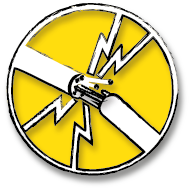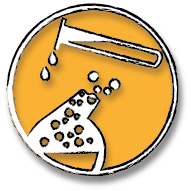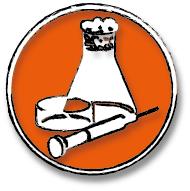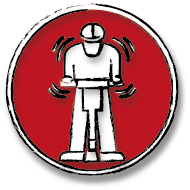What are risk factors?
So-called hazard factors or risk factors are potential dangers that can emanate from objects and possibly also from persons or animals (the sources of danger) due to their properties.
In other words, they are the properties of the source of danger. A source of danger does not necessarily have to lead to a danger. Only their properties make them hazardous. A car that does not drive does not initially pose a danger. First the moving car. The associated hazard factor would therefore be hazard from (hopefully) controlled moving parts.
Or in general: mechanical hazards.
Hazard factors are latent, usually predictable and do not occur alone. Whether the factors become effective, i.e. whether they can lead to an accident or illness, depends on whether and to what extent the hazard factor coincides with you as an employee in terms of space and time.
That sounds complicated? But it is not! In the following (incomplete list) we have compiled the most important groups of hazard factors for you. Which ones are present at your workplace?
Click on the images or headings to go to the next page.

These are all factors emanating from dangerous surfaces, moving parts, vehicles or moving work equipment in general. These also include falls and falls, slips, buckling, etc.

These are hazards caused by electric shocks, electric arcs and electrostatic charges. Such hazards lurk at almost every workplace. At the University of Konstanz, all electrical equipment and cables are regularly tested. Nevertheless, check for defective cables, switches, etc.

A recurring topic at the University of Constance. Less in offices, but mostly in laboratories and workshops. Always pay attention to the hazardous substance labels in the form of GHS pictograms. In addition to the pictograms, hazardous substance containers and labels always contain information about the type of hazard and safety instructions. Find out more.

Biological hazardous substances lurk not only in the laboratories of biology. Germs are everywhere. The best precaution against infections is hygiene, i.e. regular and thorough washing of the hands. Details can be found on the page on influenza vaccination.
Further important information can be found on the Biological Safety and Genetic Engineering pages.

Hazards caused by flammable solids, liquids and gases. Depending on their properties, flammable liquids can form a flammable or even explosive atmosphere by evaporation over the surface. One spark might do the job...

These are in particular very cold or very hot surfaces with which you can come into contact. Welding work, for example, plays an important role in scientific workshops. The risk can often be reduced by suitable PPE.

Is it very noisy at your workplace? Do you work with ultrasound? Are you exposed to vibrations or ionizing radiation? Do you work with or on laser equipment? Are there electromagnetic fields in your environment or do you work under positive or negative pressure?

Hazards arising from working environment conditions
Is your office too small, too dark? Is the laboratory inaccessible due to a lot of equipment? Do you work on or even under water? Is it too cold or too warm in the office or at work? Do you get too little breathing air or are you restricted in your freedom of movement? All of these are hazard factors that can affect you through the design of your workplace.

Do you perform heavy physical or perhaps one-sided stressful work? Do you work standing up or upside down at the end? If you work all day on the screen, you may be at risk.

Your work is not physically demanding, but monotonous. No alternation, no over- or under-exertion, your everyday working life will be shaped. Are you under a lot of time pressure or are you bored? Do you have to work a lot of overtime to complete your tasks and are you perhaps under pressure from your supervisor or colleagues? Are you bullied?

Hazards caused by humans, animals or plants
It is no secret that animals can be aggressive and plants poisonous. But humans can also do that quite well. Here, however, physical violence plays a role in addition to psychological stress. Have you ever been threatened or even attacked?


